Diwali / Deepavali is also known as the Festival of Lights (the name of this festival may be literally translated from Sanskrit as rows of lights), and is one of the most well-known and important Indian festivals. While the origins of this festival can be found in the Hindu faith, it is celebrated also by adherents of other faiths, including Sikhs and Jains. Additionally, although Diwali is a national holiday in India, its celebration has not been limited to that country alone, and today it is celebrated in many other parts of the world as well.
The Day to Celebrate Diwali
The exact date of Diwali varies from year to year, as it is determined by the Hindu lunisolar calendar. Nevertheless, the festival usually falls between mid-October and mid-November each year.
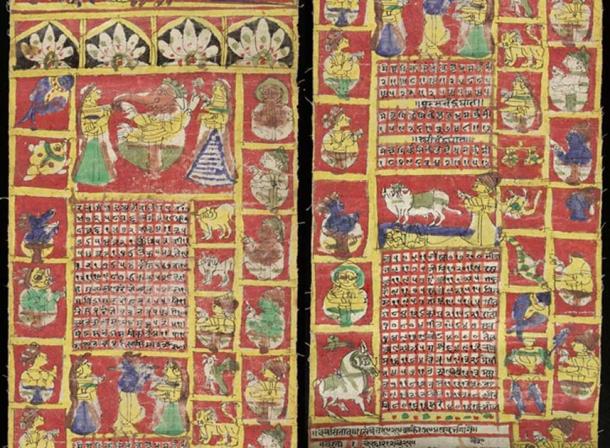
A page from the Hindu lunisolar calendar of 1871-72. (Public Domain)
The festival of Diwali is celebrated over a period of five days and it coincides with the Hindu New Year. For some, Diwali also marks the beginning of a new financial year for Indian business. The actual day of Diwali is traditionally celebrated on the third day of this festive season. There are a number of traditions associated with the festival of Diwali.
The History Behind the Festival of Lights
The most widely shared of these is the story of Rama’s return from exile and his defeat of the demon king of Lanka, Ravana. This story can be found in the great Hindu epic, the Ramayana, and commemorates the triumph of good over evil.
According to this story, Rama was exiled from their home in Ayodhya by his stepmother, who wanted to place her own son on the throne. Rama was joined in his exile by his wife, Sita, and his younger brother, Lakshmana.
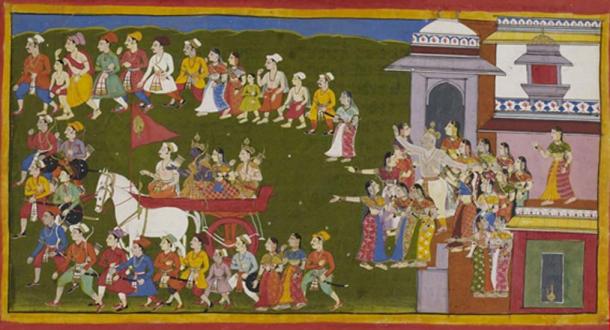
Rama leaving for fourteen years of exile from Ayodhya. (Public Domain)
During their 14-year exile, Sita was kidnapped by Ravana, who wanted to exact revenge on Rama and Lakshmana for cutting off the nose of his sister, the demoness Surpanakha. Eventually, Rama rescued his wife by defeating and slaying the demon king. At the end of their exile, the three protagonists returned to Ayodhya, and Rama was crowned king. Upon their arrival in the city, they were welcomed joyfully by its citizens, who lighted thousands of earthen lamps. This tradition is still practiced today by Hindus celebrating Diwali.
- Rama's Bridge: Where Modern Science And Ancient Myths Collide
- Smithsonian releases massive digitized collection of Asian treasures for public use
- Dwarka: The Home of Krishna is a Gateway to Heaven and an Underwater City
The Human Role in Making the World a Better Place
Another way of understanding the festival of Diwali may be obtained by looking beyond Rama’s return to Ayodhya. One scholar has pointed out that during the 15th century, a poet by the name of Tulasidasa wrote an account of the life of Rama in his version of the Ramayana. According to Tulasidasa, Rama’s return from exile ushered in a period of peace and prosperity, characterized by the absence of poverty, illiteracy, disease, and violence.
In spite of Rama’s status as a god (he is believed to be the 7th avatar of Vishnu), he did not bring about these transformations magically, but relied on the help of human beings. Thus, Diwali may also be seen as a festival that reminds us of our responsibility as human beings in making this world a better place through our co-operation with each other.
The Sikh ‘Prisoner Release Day’
For the Sikhs, the festival of Diwali coincides with another celebration known as Bandi Chhor Diwas, which means ‘Prisoner Release Day.’ This festival is celebrated to mark the day that the 6th Sikh Guru, Guru Hargobind, was released from Gwalior Fort, along with 52 Hindu Rajas (kings), in 1619. There are several variations as to why Guru Hargobind became a prisoner of the Mughals.
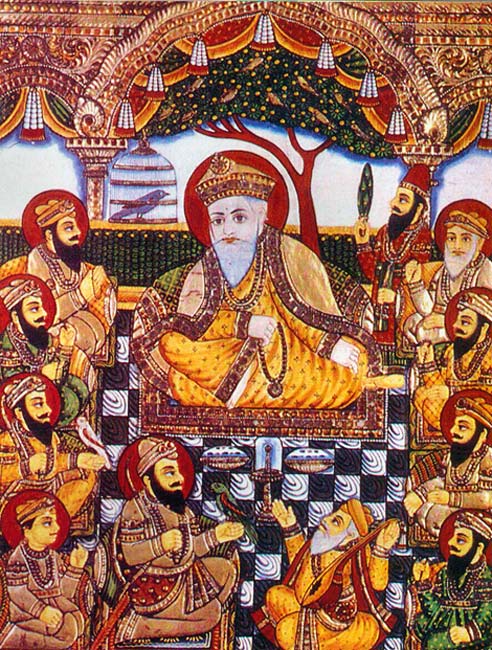
A rare Tanjore-style painting from the late 19th century depicting the ten Sikh Gurus. (Public Domain)
Guru Hargobind: Prisoner of the Mughals
In one version, the Guru was said to have been imprisoned because Jahangir, the Mughal emperor, was jealous of the rapid growth of the Sikh faith. Another version suggests that the Guru became good friends with Jahangir. In this version it was a rich banker by the name of Chandu Shah that was jealous of the good relationship between the two men and was responsible for the Guru’s imprisonment.
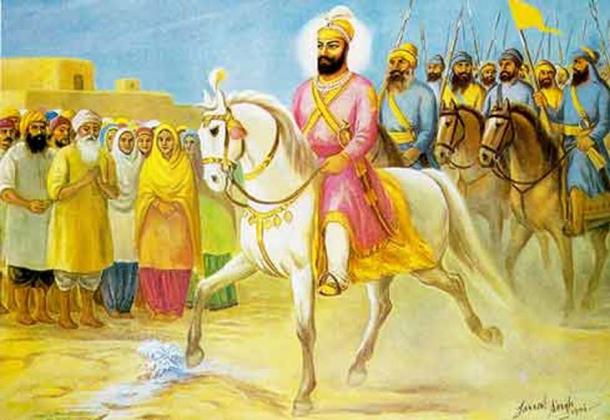
The arrival of Guru Hargobind. (Public Domain)
When he arrived at Gwalior Fort, Guru Hargobind was greeted by 52 Hindu Rajas who had opposed the Mughals. When Jahangir found that Guru Hargobind was innocent and harmless, he decided to release the Guru. However, the latter refused to leave, unless the 52 Rajas were released as well.
A compromise was reached, and the Mughals promised that they would free any Raja who could hold onto the Guru’s gown. It seemed impossible that all 52 Rajas would be able to hold on to the Guru’s gown, and therefore obtain their freedom. Guru Hargobind, however, came up with an ingenious solution, and had a special gown made with 52 long strips attached to it. As a result, the Guru managed to obtain freedom for all the captive Rajas.
- The Hindu sacred texts about human origins
- The Sree Padmanabhaswamy Temple: Secret Cellars Create the Richest Hindu Temple in India
- The Mythological Origins of Holi: Ancient and Colorful Festival of South Asia
To commemorate this event, each year on Diwali, Sikhs light up the Golden Temple at Amritsar and put on a fireworks display. Festivities are also taken part in by Sikhs outside India. One could argue that Diwali is a festival meant to bring out the best in people, wherever they are.
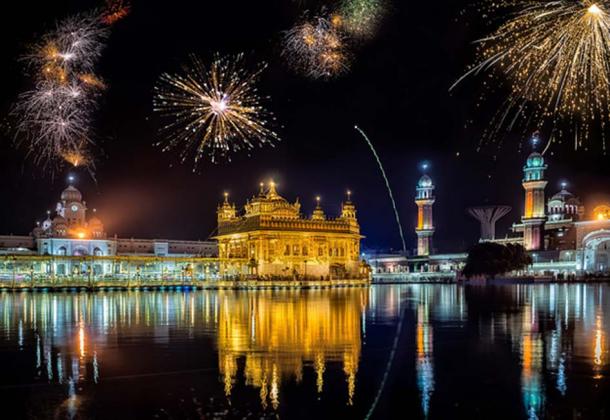
Composite image of fireworks over the Golden Temple, Amritsar, India. (CC BY 2.0)
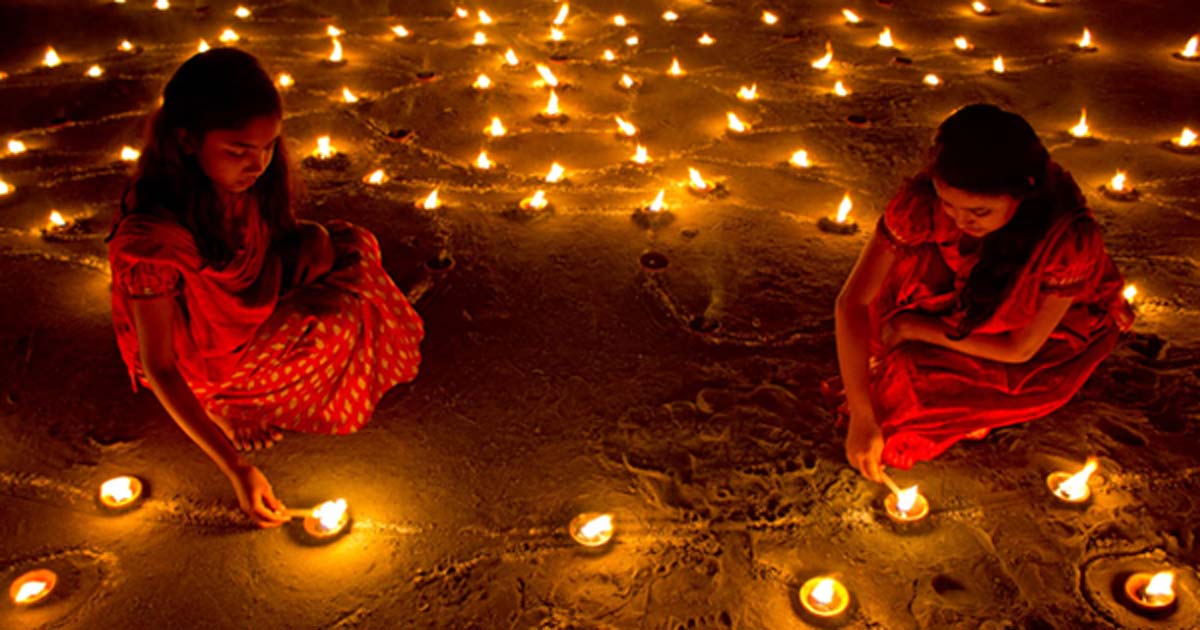
No comments:
Post a Comment